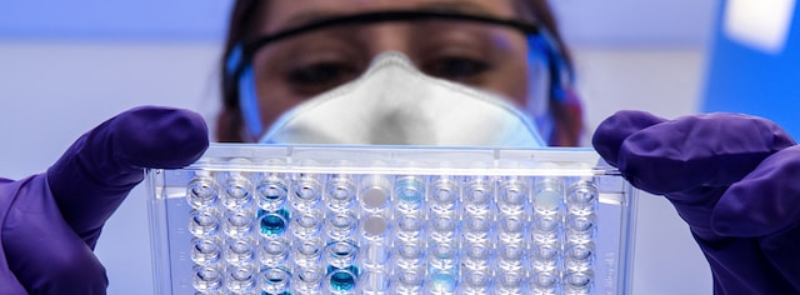
When It Occurs
Annually Final Day of February
Timeline
Days to Come (6)
# Hashtags
#RareDiseaseDay #MedicalAwareness
Rare Disease Day, observed on the final day of February, is a dedicated initiative aimed at increasing awareness of uncommon medical conditions and enhancing access to treatment and advocacy for individuals and families affected by such diseases. Established in 2008 by the European Organisation for Rare Diseases, the day seeks to shed light on illnesses that often go unnoticed or unrecognized. The organization highlights the insufficient treatment options for many rare diseases and the lack of social support networks for those affected and their families.
Prior to the inception of Rare Disease Day, specific days were allocated for diseases like AIDS and cancer, but there was no dedicated day for individuals impacted by rare diseases. In 2009, the initiative expanded globally, with the National Organization for Rare Disorders mobilizing 200 rare disease patient advocacy organizations in the United States. Simultaneously, organizations in China, Australia, Taiwan, and Latin America took the lead in coordinating activities and promoting Rare Disease Day in their respective regions.
Origin and History
- Founding: Rare Disease Day was established in 2008 by EURORDIS (European Organisation for Rare Diseases) and its Council of National Alliances.
- First Observance: The first Rare Disease Day was observed on February 29, 2008, chosen because it's a rare date that only occurs in leap years.
- Global Reach: Initially launched in Europe, Rare Disease Day has since grown into a worldwide event, with participation from organizations in over 100 countries.
Significance
- Awareness and Advocacy: The day is dedicated to raising awareness among the general public and decision-makers about rare diseases and their impact on patients' lives.
- Education: It serves as an educational platform to inform about the challenges faced by people with rare diseases, including the need for special treatments and medical attention.
- Research Promotion: It promotes the importance of research into rare diseases, which often receive less funding and attention than more common conditions.
Activities and Celebrations
Events and Campaigns
- Public Events: Walks, runs, and public gatherings are organized to show support for those affected by rare diseases and to raise awareness.
- Conferences and Seminars: Medical professionals, researchers, and advocates come together to share knowledge, discuss advancements, and strategize on improving care and treatment options.
- Workshops: Educational workshops for patients, caregivers, and healthcare providers to discuss the latest research, treatment options, and coping strategies.
Media and Social Media
- Awareness Campaigns: Social media campaigns using hashtags like #RareDiseaseDay and #ShowYourRare help spread awareness and encourage people to share their stories.
- Press Releases and Articles: Media outlets publish articles and stories highlighting the experiences of those living with rare diseases and the ongoing research efforts.
- Video Campaigns: Organizations produce and share videos that showcase personal stories and highlight the significance of rare disease awareness.
Government and Policy
- Advocacy Efforts: Lobbying activities and meetings with policymakers aim to secure better funding for research and improved access to treatments.
- Proclamations and Resolutions: Local, regional, and national governments may issue proclamations recognizing Rare Disease Day and committing to support initiatives for rare disease patients.
Community and Support
- Support Groups: Special meetings and activities for support groups, providing an opportunity for patients and families to connect and share experiences.
- Fundraising: Fundraising events to support research, patient support programs, and advocacy efforts.
Challenges Faced by People with Rare Diseases
- Lack of Awareness: Many rare diseases are not well known, even among healthcare professionals, leading to delays in diagnosis and treatment.
- Limited Treatment Options: Research and development of treatments for rare diseases are often limited due to low financial incentives.
- High Costs: Treatments, if available, can be extremely expensive, placing a financial burden on patients and their families.
- Social Isolation: Patients with rare diseases may experience social isolation and a lack of support due to the rarity of their conditions.
- Policy Gaps: Inadequate policies and lack of governmental support can hinder access to necessary care and resources.
Impact of Rare Disease Day
- Increased Awareness: The day has significantly increased awareness about rare diseases among the general public, healthcare professionals, and policymakers.
- Enhanced Research: It has led to greater funding and attention to research into rare diseases, resulting in new treatments and improved patient care.
- Policy Improvements: Advocacy efforts have contributed to policy changes that improve access to care and support for patients with rare diseases.
- Community Building: Rare Disease Day fosters a sense of community among patients, families, and advocates, providing much-needed support and solidarity.
How to Get Involved
- Participate in Events: Join local events or virtual activities organized to raise awareness about rare diseases.
- Spread the Word: Use social media to share information and stories about rare diseases, using hashtags and engaging with awareness campaigns.
- Support Organizations: Donate to or volunteer with organizations that support rare disease research and patient advocacy.
- Advocate for Change: Contact local representatives and policymakers to advocate for better funding and support for rare disease research and patient care.
- Educate Yourself and Others: Learn about rare diseases and share knowledge with your community to help reduce stigma and increase understanding.
Conclusion
Rare Disease Day plays a crucial role in highlighting the challenges faced by individuals with rare diseases and advocating for better research, treatment, and support. By raising awareness, promoting research, and encouraging policy changes, this observance contributes to improving the lives of millions of people affected by rare diseases worldwide. Through participation, education, and advocacy, everyone can help make a difference in the lives of those living with rare diseases.


